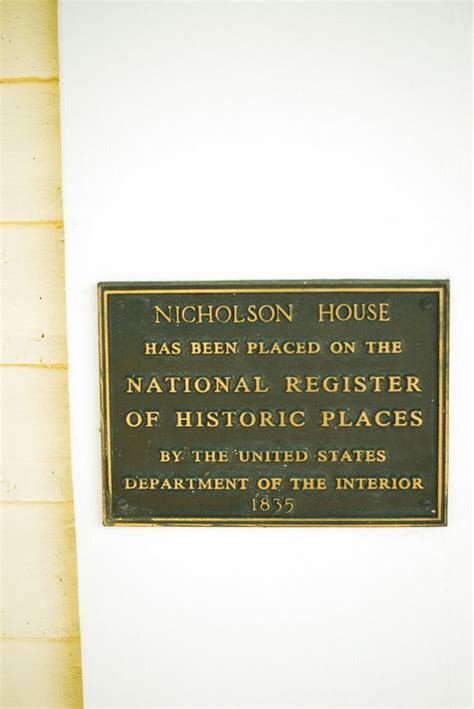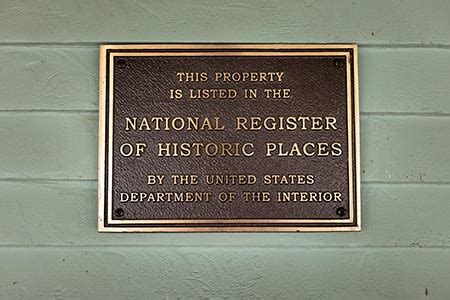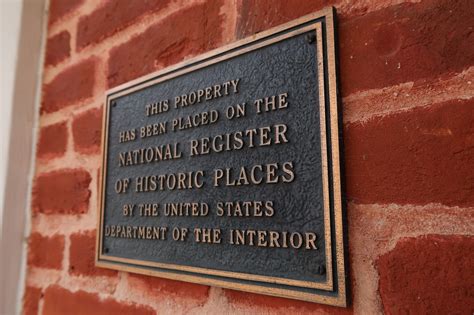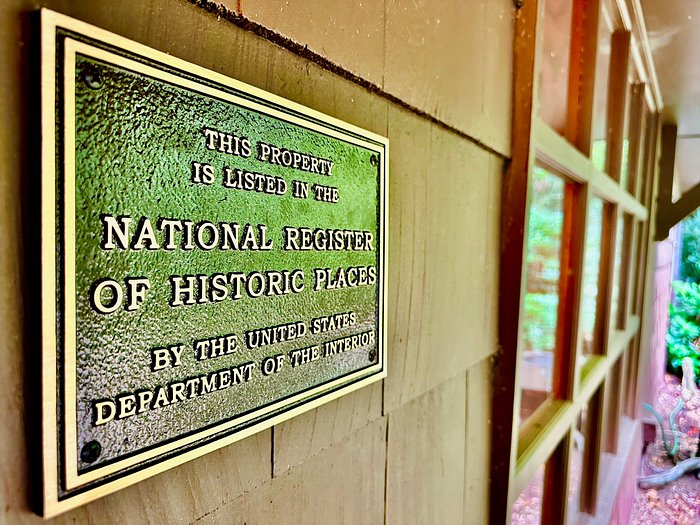The National Register of Historic Places is an official list that recognizes significant historic sites across the United States. Established to honor and preserve the nation’s cultural heritage, the Register highlights locations with historical, architectural, or archaeological importance. Each year, new sites are added to the Register, reflecting the evolving narrative of American history. This article explores the latest additions to the Register, outlining the criteria for inclusion and examining the impact these sites have on their local communities. By visiting or supporting these historic places, you can contribute to the ongoing preservation of our shared heritage.
ritarblog.com invites you to delve into this topic thoroughly.
1. Introduction to the National Register of Historic Places
The National Register of Historic Places is a vital tool in the United States for recognizing and preserving sites that have played a significant role in the nation’s history. Managed by the National Park Service, the Register includes buildings, districts, structures, and objects deemed worthy of preservation for their historical, architectural, or archaeological significance. Established under the National Historic Preservation Act of 1966, the Register aims to honor the diverse stories that have shaped America’s past, from iconic landmarks to lesser-known treasures.
Inclusion in the National Register not only acknowledges a site’s importance but also offers protections and incentives for preservation. Property owners may qualify for federal preservation grants, tax credits, and protection from federally funded projects that could harm the site. The Register currently lists over 95,000 properties, ranging from famous monuments to humble homes, each contributing to the nation’s historical fabric.
This article provides an overview of the National Register, detailing the criteria for inclusion and highlighting some of the most recent additions. As we explore these newly recognized sites, we gain insight into the evolving landscape of American heritage and the ongoing efforts to safeguard these significant places

2. Criteria for Inclusion in the Register
To be included in the National Register of Historic Places, a site must meet specific criteria that reflect its historical, architectural, or archaeological significance. The process begins with a thorough evaluation by professionals in history, architecture, and archaeology. Sites must demonstrate significance in American history, architecture, archaeology, engineering, or culture. This significance can be at the local, state, or national level.
The criteria for inclusion emphasize the importance of age, integrity, and significance. Generally, a site should be at least 50 years old and retain its original character. Sites can be associated with significant historical events, people, or developments that shaped the nation’s history. Alternatively, a property may be recognized for its architectural style, construction method, or the work of a master. Archaeological sites that have the potential to yield valuable information about history are also eligible.
In addition to these criteria, the nomination process involves rigorous documentation, including research, photographs, and maps, to substantiate the site’s importance. Once reviewed and approved at the state and federal levels, the site is officially listed in the National Register, ensuring its recognition and protection as part of America’s cultural heritage.

3. Recent Additions to the Register
The National Register of Historic Places continually evolves, with new sites added each year that reflect the diverse history and culture of the United States. Recent additions showcase a wide range of properties, from architectural gems and historic districts to culturally significant landmarks that tell unique stories about the American experience. These newly listed sites span various regions and represent different time periods, offering fresh perspectives on the nation’s heritage.
Among the recent additions are historic homes that once belonged to influential figures, commercial buildings that played pivotal roles in economic development, and sites associated with key social movements. These places not only capture the architectural styles of their time but also embody the cultural and historical narratives that shaped their communities. For example, some sites are recognized for their connections to the Civil Rights Movement, while others highlight contributions to arts, industry, or science.
These recent listings underscore the ongoing efforts to broaden the scope of historic preservation, ensuring that a more inclusive and representative array of American stories is preserved. By examining these new entries, we gain a deeper understanding of the dynamic and multifaceted nature of American history, as well as the importance of preserving these sites for future generations to learn from and appreciate.

4. Notable Historic Sites Added
Among the recent additions to the National Register of Historic Places, several sites stand out for their exceptional historical and cultural significance. These notable entries highlight diverse aspects of American history, from architectural innovation to social progress, offering invaluable insights into the past.
One of the most remarkable additions is a mid-century modern architectural masterpiece designed by a renowned architect. This site exemplifies the sleek lines and innovative materials characteristic of the era, preserving an important chapter in the evolution of American residential design. Another significant addition is a historic district that was a center of industrial activity during the early 20th century. The district’s well-preserved buildings and structures provide a glimpse into the booming manufacturing era that helped shape the local economy and community.
Also noteworthy is the inclusion of a landmark associated with the Civil Rights Movement. This site played a pivotal role in advancing social justice and civil rights, serving as a meeting place for key figures and events that had a lasting impact on the nation.
These sites, along with others recently added to the Register, not only honor the rich and varied history of the United States but also highlight the ongoing efforts to recognize and preserve the stories that have shaped the country’s identity.
5. Impact on Local Communities
The addition of new sites to the National Register of Historic Places has a profound impact on local communities, both culturally and economically. Recognition on the Register often revitalizes interest in these areas, attracting visitors, scholars, and preservationists who contribute to the local economy. Tourism can increase significantly as people are drawn to these newly listed historic sites, leading to more business for local shops, restaurants, and hotels.
Beyond economic benefits, these listings foster a sense of pride and identity within communities. Being recognized on the National Register validates the historical and cultural importance of a place, encouraging residents to engage more deeply with their local history. This recognition can also inspire community efforts to preserve and celebrate their heritage, leading to stronger neighborhood bonds and a shared commitment to maintaining the area’s unique character.
Moreover, inclusion in the National Register often provides access to grants, tax incentives, and other resources that support preservation efforts. These resources can be crucial in maintaining and restoring historic properties, ensuring that they remain intact for future generations. As these sites are preserved and celebrated, they become integral parts of the community’s narrative, serving as tangible connections to the past and ongoing symbols of the community’s cultural legacy.
6. Preservation Efforts and Future Plans
Preservation efforts for newly added sites on the National Register of Historic Places are critical to safeguarding their historical integrity. These efforts often involve collaboration between local governments, preservation organizations, and community groups. The primary goal is to maintain the architectural and cultural authenticity of these sites while adapting them for contemporary use when necessary. Restoration projects, guided by strict preservation standards, ensure that these historic properties retain their character and significance.
Looking ahead, future plans focus on expanding public awareness and engagement with these historic sites. Educational programs, tours, and community events are increasingly being developed to connect people with the history these places represent. Additionally, there is a growing emphasis on sustainability, ensuring that preservation practices are environmentally responsible. Continued advocacy for funding and legislative support remains essential to these efforts.
By preserving these sites and making them accessible to the public, we not only protect our shared heritage but also create opportunities for future generations to learn from and appreciate the rich history embedded in these places.
7. How to Visit or Support These Historic Sites
Visiting and supporting newly listed historic sites offers a meaningful way to engage with and preserve America’s cultural heritage. To visit these sites, check local tourism websites or the National Park Service for information on hours, tours, and special events. Many sites offer guided tours that provide deeper insights into their history and significance.
Supporting these historic places can involve several actions. Consider making a donation to local preservation organizations or participating in fundraising events that benefit these sites. Volunteering your time for restoration projects or educational programs is another valuable way to contribute. Additionally, spreading awareness through social media or community groups helps generate interest and support.
By visiting and actively supporting these historic sites, you play a crucial role in ensuring their preservation for future generations. Engaging with these sites not only enriches your understanding of history but also helps maintain the cultural landmarks that define our shared heritage.
In conclusion, the National Register of Historic Places continues to honor and protect America’s diverse heritage through its new additions. By exploring and supporting these sites, we help preserve their historical significance and foster a deeper appreciation for our shared past. Engaging with these places ensures their legacy endures for future generations.
ritarblog.com

